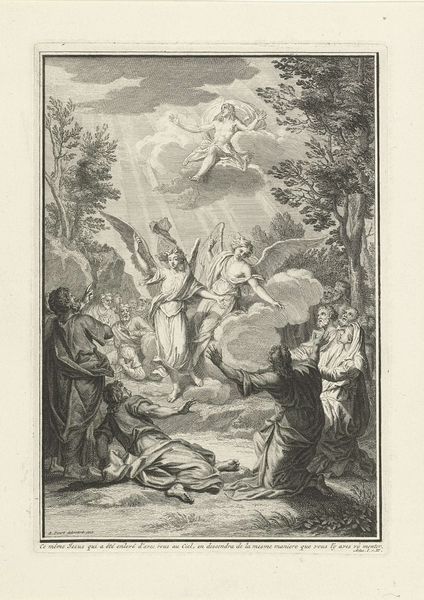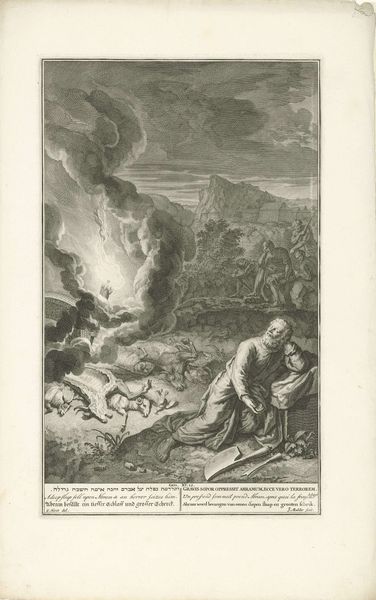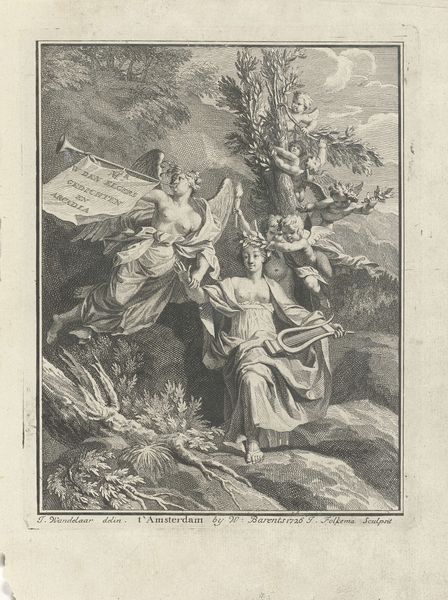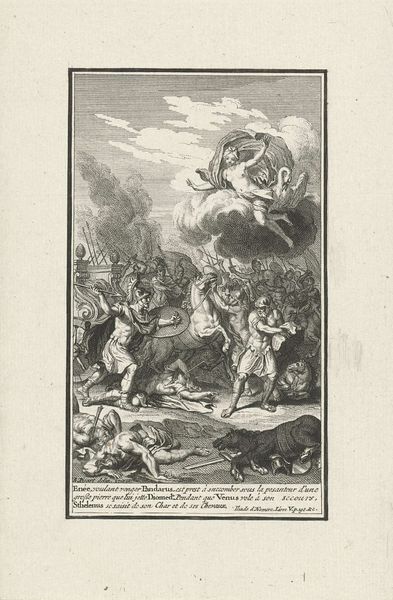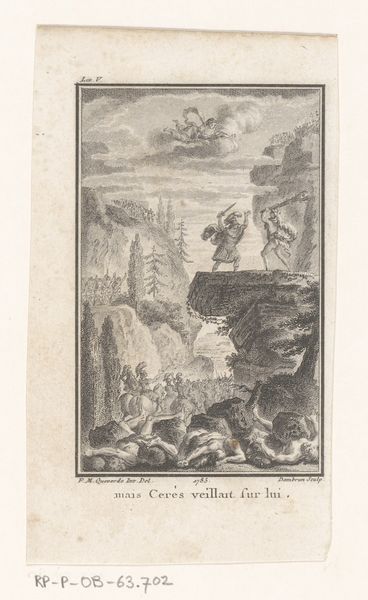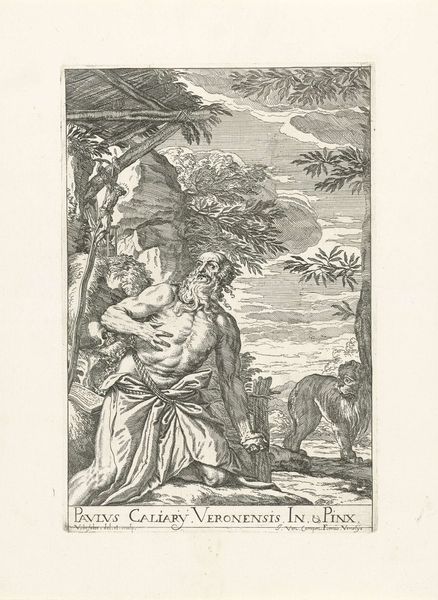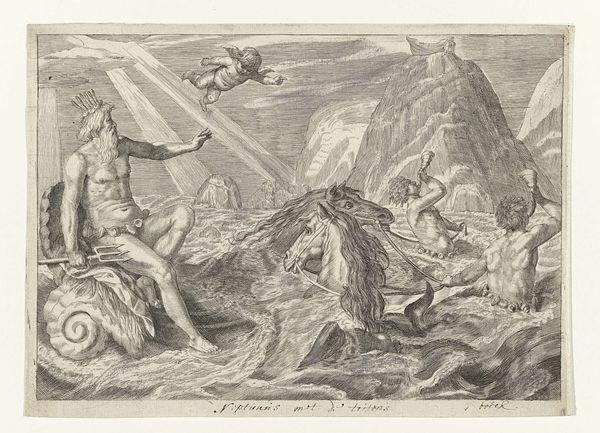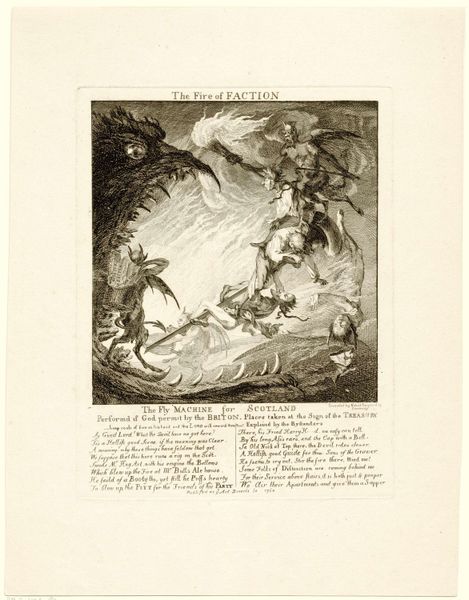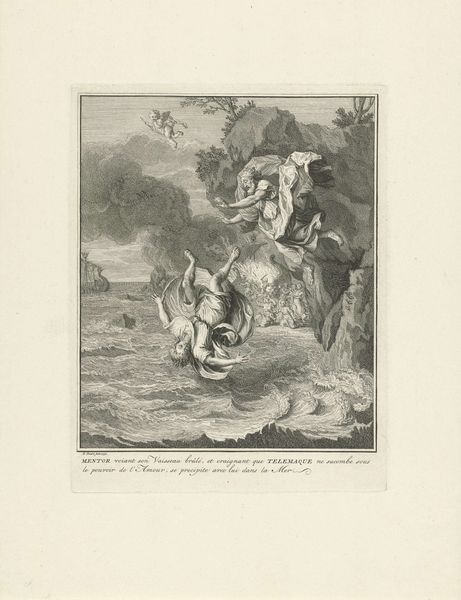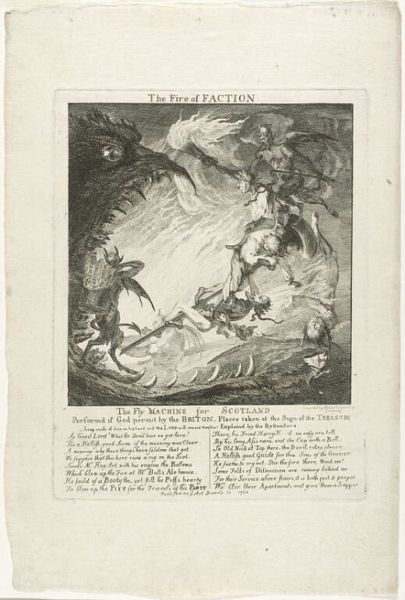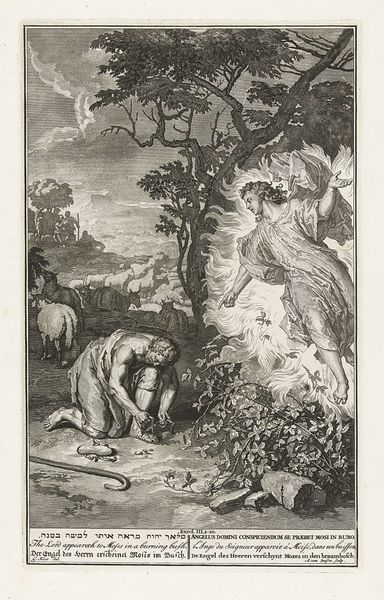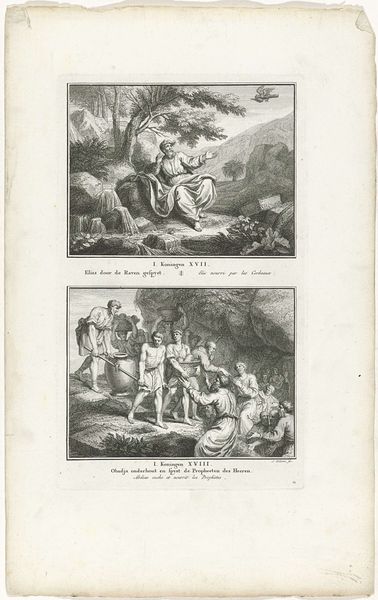
print, paper, engraving
#
baroque
# print
#
old engraving style
#
figuration
#
paper
#
history-painting
#
engraving
Dimensions: height 360 mm, width 220 mm
Copyright: Rijks Museum: Open Domain
Editor: So this is "David toont Saul het stuk van zijn mantel," or "David showing Saul the hem of his cloak," a print by Andries van Buysen from around 1711. It's fascinating how much drama he manages to pack into a small engraving. What stands out to me is the contrast between David's humble posture and Saul's almost frantic pose in the cave. What do you see in this piece? Curator: Indeed, a seemingly simple image carries deep symbolism. Notice how the tear in Saul’s cloak becomes the central visual motif. This fragment embodies the ruptured covenant between Saul and God, a potent symbol of lost legitimacy and divine favour transferred to David. Think about the weight attached to clothing; it signifies status and divine anointment. How might contemporary audiences have read this ‘garment’ of meaning? Editor: So the cloak isn't just fabric; it represents something bigger about power and destiny? The theatrical poses do hint at that... Curator: Precisely. Saul's dramatic gesture of defiance or supplication becomes a mask, veiling his internal struggle with fading power. Meanwhile, David's calm demeanor masks an assertion of loyalty *and* destiny fulfilled. Can you feel the cultural memory of kings, prophets and divine judgement echoing through this scene? The landscape isn't incidental; caves, wild terrain, were potent spaces for both spiritual revelation and challenges to authority. It's a space outside the structured world, a space where things happen. Editor: I can definitely see that now – the cave really sets the scene for conflict and change. Thanks, that helped me look beyond the surface narrative. Curator: And I have a clearer understanding of how landscapes might have symbolized this new leadership transition at that period in time! A testament to continuous dialogue and cultural heritage being shared by both figures through something seemingly minor.
Comments
No comments
Be the first to comment and join the conversation on the ultimate creative platform.
